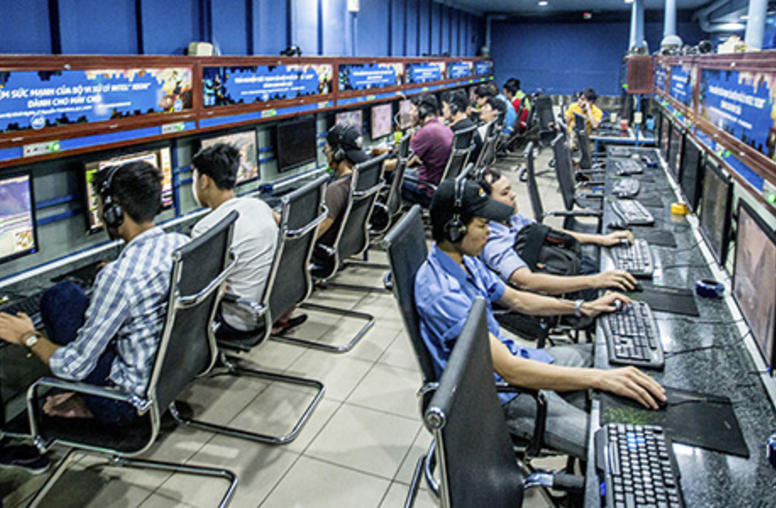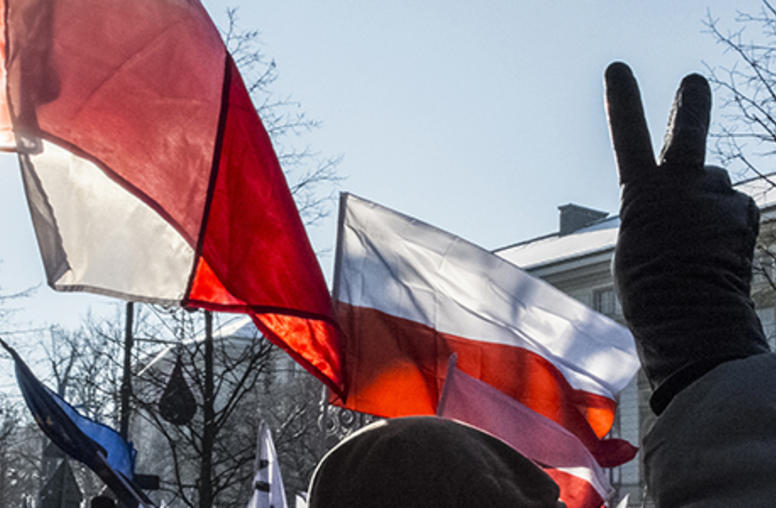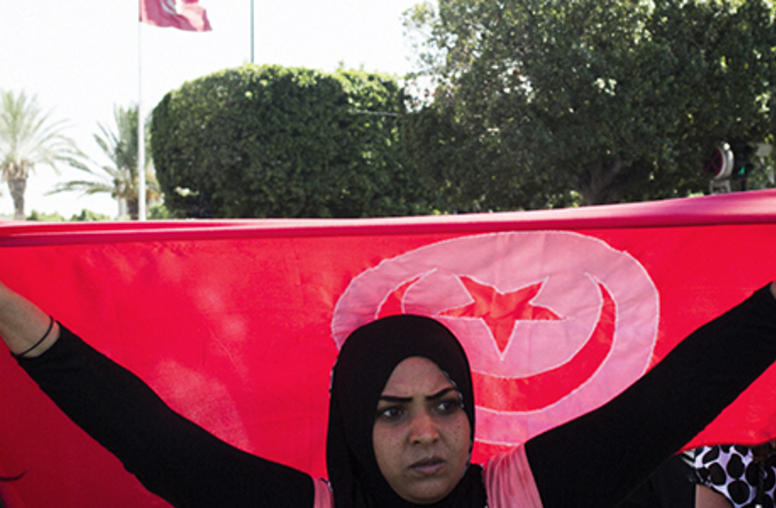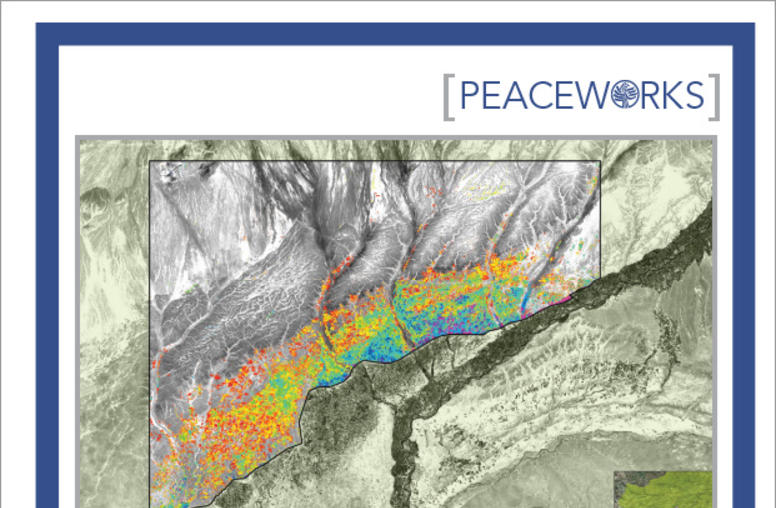The Role of the Media in Conflict
The first meeting of the Institute's Media and Conflict Working Group analyzed the role of the media throughout the conflict cycle. While a considerable amount of analysis has focused on the media’s potential to support democracy efforts and build sustainable peace, no similar effort has been given to analyze the role media can play in conflict prevention.
While a considerable amount of analysis has focused on the media’s potential to support democracy efforts and build sustainable peace, no similar effort has been given to analyze the role media can play in conflict prevention. Nor has the media’s capacity to incite conflict been sufficiently analyzed and the lessons learned.
The Institute recognizes the potential role of the media in conflict prevention, conflict management, and post-conflict reconstruction. Its Media and Conflict Working Group will analyze the role of the media throughout the conflict cycle. The first meeting of the working group, which was held May 4, 2007, focused specifically on the role of media in conflict prevention. It was chaired by John Langlois, of USAID’s Office of Transition Initiatives. Presenters included Kemal Kurspahic, former editor-in-chief of the Bosnian daily newspaper Oslobodenje and now the founding chairman of the Media in Democracy Institute; Steven Livingston, professor of Media and Public Affairs and International Affairs at the George Washington University; and George Papagiannis, vice-president for Policy and Government Affairs at Internews Network. This USIPeace Briefing summarizes the working group’s discussion on the role of media in conflict prevention, and does not represent the views of the Institute, which does not take policy positions.
A Role for Media in Conflict: Defining the Parameters
John Langlois framed the discussion within four tight parameters in order to enable a productive, focused discussion. First, he asked how the media contributes to or dampens potential conflict situations, and whether the media plays a role in setting agendas for potential third party interveners. The group was also asked to ponder the differences between local media and the international media in reporting—or not reporting—on conflict events. Finally, the group was prompted to think about the degree to which media is a root cause of conflict itself.
The Role of the International Media: Setting an International Agenda for Conflict
International media sources such as the BBC, CNN, al Arabiya, and al Jazeera have global reach, and as such have an "agenda-setting effect." This effect, as Steven Livingston explained, revolves around the ideological components of political disagreements, and more specifically the way key actors in conflict seek to manipulate public perceptions of the disagreement. That is, actors in any conflict will seek to either minimize or exaggerate the conflict, depending upon their relative position of power. Weak actors will want to "socialize" the conflict—that is, to enlist allies in their cause against a greater power and to increase the perception of suffering. Actors in positions of dominance seek to "privatize" the conflict and limit attention to or awareness of the conflict. Those who are weak will seek to draw media coverage to the conflict while those who in power will seek to minimize the extent of the problems. How does the media respond to these conflicting efforts at "spin"? What determines the kind of attention that media give to conflict?
According to Livingston’s research, the assumption that the greater the amount of death and destruction, the more attention the media will pay to the conflict, is false. His data show that no correlation exists between the number of people at risk of dying—an indicator of a pre-conflict scenario—and media attention. The international media seems a very haphazard bellwether of conflict and an even more cursory method by which to set international policy agendas. Media, and the way in which it selects material to report, is simply not a reliable catalyst for policy change. The international community would do well to recognize the danger of calibrating its responses to the substance and timing of the information it receives from media reports.
The Role of Local Media: Community Building and Trust
Whereas international media giants are juggernauts in the policy-setting arena, local media plays a different role in conflict prevention. Often, local media can contribute to peace merely by restoring levels of trust and self-worth in a population on the brink of or emerging from violence. George Papagiannis’ work in Chad speaks to the ability of local media to give voice to those who were previously silenced by conflict. Papagiannis shared his impressions of running radio stations in refugee camps in Chad. "Genocide is about silencing a people. So when you give someone a microphone and ask them to tell you something, it is like giving something back." The goal of the radio station was purely non-political; the aim of these stations was to put the focus on the voices of local community and to relay the tales of those who were recovering after the violence. The airwaves became a forum for witness and testimony. The community members told stories of where they were when attacks happened, described previous and current relationships with their neighbors, and gave other personal yet socially relevant information.
Papagiannis also oversaw the launch of a pilot program called "The Bridge." This program brings together various communities on a regular basis to talk through potentially divisive issues in a fairly structured environment. This gives the opportunity for community members at odds to release some of their tensions through radio rather than through armed conflict. Where the media can occupy space in the grassroots of civil society there is potential for healing and community building. Such activity not only rebuilds societies after conflict, but also prevents against future resurgence of violence.
When Media becomes a Source of Divisiveness: Case in the Balkans
Whereas Papagiannis showed the value in local media in building community, Kemal Kurspahic drew upon his experience in the Balkans to emphasis that the media can just as easily have a deleterious effect and cause an escalation of violence and hate speech. The media’s actions in the Balkans are a prime example of how the media can be a source of antagonism and an instigator of conflict rather than a source for peace. Each side (Serbian and Croatian) propagated an "us versus them" mentality among their respective populations, said Kurspahic, "to the point of inventing crimes." In addition to fanning the flames of ethnic tensions, the media was also guilty of obstructing peacemaking efforts by failing to objectively present views of the minority.
What did the Balkans show us about the media’s ability to prevent conflict? For one, the media can give voice to those who are advocating tolerance, peace, and negotiation. In Belgrade, those who opposed the war were signaled out as traitors. Had their voices been heard, others might have been inspired to non-violent means of resistance and channels for negotiation could have opened before violence ensued. Drawing from the Balkans experience (also a subject of his USIP Press award-winning book, Prime Time Crime: Balkan Media in War and Peace), Kurspahic offered some of the "universal lessons learned." Among them: the need for international mediators to make freedom of the press an integral part of any conflict management process; the importance of governments avoiding the temptation to censor the news, since doing so creates room for rumors, propaganda and hate speech; the need to make governments accountable for providing safety and access for media personnel into the zones of conflict; and the importance of enhancing—through training and media monitoring–standards, balance, and ethics in conflict reporting. Kurspahic said his recent mission to Sri Lanka showed that the experience in the Balkans applies to that country's media challenges and is broadly relevant to any zone of conflict.
Conclusions
- International media has the potential to influence governments and international organizations, and as such can have an agenda-setting effect. These reports, however, are not always the most accurate reflection of the relative severity and risk of a particular conflict.
- Donors that are interested in conflict prevention and sustaining stability should support local media. Local media often yields non-tangible results in war-torn communities, such as increased levels of trust, increased hope in the future of the country, and the ability to contribute to a peaceful society.
- Guarantees regarding the media and freedom of the press—as well as efforts to promote professional, objective, unbiased reporting—should be an integral part of any successful peace agreement.
This USIPeace Briefing was written by Yll Bajraktari, former program specialist in the Center of Innovation on Media and Conflict, and Christina Parajon, program assistant in the Center for Post-Conflict Peace and Stability Operations at the U.S. Institute of Peace. The views expressed here are not necessarily those of the Institute, which does not advocate specific policies.
The United States Institute of Peace is an independent, nonpartisan institution established and funded by Congress. Its goals are to help prevent and resolve violent international conflicts, promote post-conflict stability and development, and increase conflict management capacity, tools, and intellectual capital worldwide. The Institute does this by empowering others with knowledge, skills, and resources, as well as by directly engaging in peacebuilding efforts around the globe.



